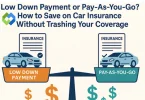Table of Contents
TL;DR
● Partner with trusted brands that sell products your audience genuinely wants or needs. Sweeten the deal with bonuses or small incentives that align with whatever you’re promoting.
● Review the products from an expert perspective. Be honest about their pros and cons, and let readers make the final call.
● Boost affiliate sales by creating gift guides, resource roundups, and pillar content. Focus on being helpful and strive to add value with every post you publish.
Well-known bloggers like Pat Flynn, Zac Johnson, and John Chow earn millions from affiliate marketing. Take Pat Flynn, for example. His blog, Smart Passive Income, has generated over $3.5 million in affiliate revenue. But here’s the part most people overlook: Flynn spent years building trust with his audience before the big numbers started rolling in.
Still, very few bloggers reach this kind of success. They might have loyal readers and solid content, but without the right affiliate strategy, they’re unknowingly leaving money on the table.
Say you’re ready to launch a blog but don’t want to spend weeks building one from the ground up. With the free website templates, you can go live in minutes and start publishing right away. That’s the easy part—it’s what you do afterward that determines your success as an affiliate marketer.
From building a genuine connection with your audience to choosing which products to promote, every step you take can make a difference. For starters, try these affiliate tactics to maximize your revenue.
Table of Contents
9 Affiliate Marketing Strategies to Boost Your Earnings
According to a Demand Sage report, only 1% of affiliate marketers earn more than $1 million. The majority (around 80%) generate up to $80,000 a year, while 15% fall somewhere between $80,000 and $1 million in annual revenue.
If you’re new to affiliate marketing, your monthly earnings might not exceed $1,000—but that’s no reason to give up. Keep pushing, gain experience, and your income will grow. Here’s how to make it happen.
1. Narrow Down Your Niche
A recent survey by Authority Hacker revealed that the most profitable affiliate niche in 2025 is education, with marketers reporting an average monthly income of $15,551. Following closely are travel, beauty, and finance.
| Rank | Affiliate Niche | Average Monthly Revenue (2025) |
| 1 | Education and e-learning | $15,521 |
| 2 | Travel | $13,847 |
| 3 | Beauty and skincare | $12,476 |
| 4 | Finance | $9,297 |
| 5 | Technology | $7,418 |
| 6 | Digital marketing | $7,218 |
| 7 | Health and fitness | $7,194 |
| *Source: Authority Hacker | ||
These figures show that you can make money with affiliate marketing in most industries, but some niches consistently outperform others.
However, choosing a profitable niche doesn’t guarantee success. Education, beauty, travel, and other top-performing niches are very competitive, and, unless you can bring something new to the table, you don’t stand a chance.
The solution? Find a niche you’re passionate or knowledgeable about, then narrow your focus.
Suppose you want to start a fitness blog and promote athletic apparel, home gym equipment, or other related products. Browse the free website templates offered by Wix for example, pick one, and decide which direction you want to go.
Let’s see a few examples:
● At-home workouts for busy professionals
● Strength training for women over 50
● Functional fitness for people with back pain
● Post-workout recovery
● Bodyweight workouts for small spaces
For example, a blog revolving around post-workout recovery could promote massage guns, foam rollers, and dietary supplements like glutamine or creatine. If you write about strength training for women over 50, you’ll team up with brands that sell home gym equipment, protein supplements, joint health formulas, gym gloves, and so on.
This approach can make it easier to reach your target audience, establish authority, and build a community around your blog.
Returning to the above example, you won’t be competing with famous fitness bloggers like Kayla Itsines, Jen Selter, or Emily Skye. Instead, you’ll attract a smaller but highly engaged audience—people genuinely interested in the specific aspect of fitness, nutrition, or wellness that you focus on.
2. Create Content before Going Live
Take the time to create at least 20-25 posts before launching your blog. Consider publishing pillar posts to cover the topic in-depth and establish your expertise.
Say you plan to focus on vegan nutrition for athletes. Some examples of pillar content may include:
● Vegan protein sources
● Vegan nutrition for specific sports (e.g., bodybuilding, powerlifting, CrossFit)
● Transitioning to a vegan diet as an athlete
● Common myths about vegan diets
● Vegan supplements for athletic performance
Having content ready gives readers something to engage with immediately, setting the tone for your blog from the start. It also builds credibility, which can improve your chances of turning traffic into affiliate revenue.
Think of it like opening a local café: you wouldn’t start inviting people in if all you had was one type of coffee on the menu. First, you’d craft a few signature items to set your place apart and give customers a reason to stop by (and come back!).
3. Partner with Trusted Brands
Promote products or services from trusted brands to build credibility with your audience. Also, make sure they relate to your niche and provide genuine value.
For example, if your blog focuses on home workouts, team up with reputable companies like Rogue Fitness, Bowflex, or TRX. Don’t know where to start? Check out these fitness affiliate programs for inspiration.
Being selective benefits both your business and the end customer. Established brands often have better products and pay higher commissions than lesser-known companies.
Some even give affiliates early access to new releases or send product samples for review, making it easier to create authentic content. Think of TRX, which offers commissions starting at 10% on U.S.-based sales, plus exclusive discounts for your audience.
4. Join the Right Affiliate Networks
Affiliate networks connect businesses with partners who are willing to promote their products in exchange for a commission. While they all serve the same purpose, their reliability, quality, and ease of use can differ greatly.
For example, some platforms offer advanced reporting and useful tools for comparing offers. Others feel outdated, making it difficult to discover brands, track payments, or even receive your earnings on time.
With that in mind, research your options before joining a network. Consider your niche, target audience, and the products or services you want to promote. Start by checking out these platforms:
● ShareASale: Wide variety of merchants; great for fitness, lifestyle, and wellness products.
● CJ Affiliate: Well-established network featuring global brands like Blue Apron, Hello Fresh, Macy’s, and Nike.
● ClickBank: Large selection of dietary supplements, health products, eBooks, and video programs.
● Amazon Associates: Lots of different products across various industries.
● AvantLink: Focused on fitness and outdoor brands like REI, Helly Hansen, and Adventure Well.
For example, AvantLink features premium brands offering high commissions, but its strict approval process can be a turn-off. Amazon Associates is better suited for novice bloggers—though its commissions are much lower.
Ideally, join two or three affiliate networks and work with multiple brands. That way, if one shuts down, slashes commission rates, or ends its program, you won’t be left stranded. As a rule of thumb, no single partner should account for more than half of your revenue.
5. Promote Products Recommended by Your Audience
One of the smartest ways to choose affiliate products is to listen to your audience. Instead of guessing what they want, pay attention to the questions they ask and the stuff they recommend.
For example, if you run a fitness blog, join Reddit threads and Facebook groups where gym-goers hang out.
Look for information about the products they use or need—like a specific set of resistance bands for at-home workouts. Alternatively, conduct a poll or survey to gain insight into customer preferences.
Next, partner with brands that sell those products. If, say, you want to promote an exercise mat from Rogue Fitness, you can join its affiliate program via its website.
When your affiliate offers line up with customers’ needs, you build trust and position your blog as a go-to resource. It also makes it easier to create content that solves real problems and doesn’t feel salesy.
6 . Incentivize Your Audience
Depending on the products you promote, you might be offering the same items as hundreds or even thousands of other bloggers. To boost conversions, offer your audience a little extra value, such as a free eBook, instructional video, or printable list.
If, say, you’re promoting air fryers, you could give away a recipe eBook or meal plan to customers who purchase through your affiliate link. Not only does this practice make your offer more appealing, but it also reinforces your expertise.
Now let’s assume you’re a beauty blogger promoting a specific makeup brand, like MAC Cosmetics or Glossier. Get people to buy through your affiliate link by offering:
● Access to exclusive content (e.g., makeup tutorials)
● Mini-courses on how to use the products you’re advertising
● Live demos or seminars
● Free product samples
● Contouring charts
● Shade-matching guides
The time and effort you put into creating these resources will pay off. The key is to make sure they’re relevant to your audience and complement the products you’re promoting.
7. Write Unbiased Reviews
In a 2023 survey, 43% of respondents said they trust product reviews from other users or consumers. By contrast, fewer than one-third trust articles shared on social media by friends or acquaintances.
These findings highlight the importance of authentic user reviews. Basically, writing about a product or service isn’t enough to drive sales—no matter how good your content is.
Your readers also expect honesty, transparency, and hands-on experience with whatever you’re promoting. Otherwise, you risk losing their trust.
Take CNET, TechRadar, or Wired, for example. Their reviews come from people who actually tested the products and know their features inside out. They point out what works, what doesn’t, and where the product could improve—all from an expert point of view.
While you can’t personally test every product you promote, focus on the ones that matter most.
For the others, dig into key features, specs, and how they compare to the products you have reviewed. This way, even if you haven’t personally tried them, your audience still gets useful, trustworthy insights.
8. Create a Resource Guide
Some blogs feature a “Resources” section that highlights tools, books, and other products readers might find useful. For instance, a food blogger might list specialty ingredients, kitchen gadgets, or even everyday items that make cooking and cleaning easier.
Each item in the “Resources” section can double as an affiliate link, turning a simple list of helpful tools into a stream of passive income. This tactic works in any niche, from business and technology to fashion.
Say you’re a travel blogger. Your resource guide could include booking platforms you trust, luggage you actually use, travel insurance providers, or miscellaneous items like packing cubes, travel adapters, and selfie sticks.
These recommendations can be a goldmine for your readers. Instead of digging through dozens of pages to find out which luggage you travel with, they can just check your list and pick what suits them.
9. Put Together a Gift Guide
Depending on your niche, you could also create a gift guide that features the products you’re promoting. This can be a great way to inspire your audience while driving affiliate sales.
Let’s say you’re a beauty blogger. To maximize your revenue, publish gift guides tailored to different needs and occasions, such as:
● Beauty on a Budget: Top 10 Makeup Gifts Under $30
● 5 Splurge-Worthy Beauty Gifts for Valentine’s Day
● 30 Beauty Gift Ideas for Mother’s Day
● 25+ Men’s Grooming Gift Sets That Are Worth Every Penny
● The Ultimate Hair and Beauty Gift Guide for 2026
When you mention an affiliate product in your gift guide, include both the affiliate link and contextual links to related blog posts or reviews you’ve written. This gives readers more context and helps boost organic traffic, page authority, and SEO.
Increase Affiliate Sales Without Sacrificing Quality
Maximizing your affiliate revenue doesn’t mean sacrificing content quality. Partner with reputable brands, recommend products you trust, and share the “why” behind your choices. Also, disclose any affiliate relationships to maintain transparency.
Most importantly, put your readers first. Focus on products they’ll actually use, be honest about their benefits and drawbacks, and let your audience make the final call. Prioritize value sales, and the results will follow.














